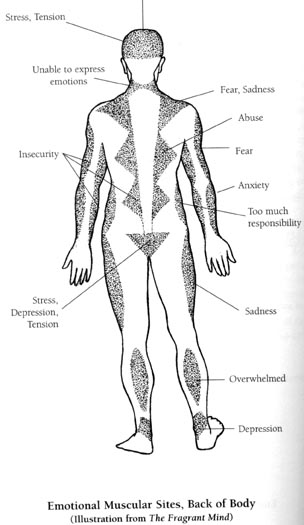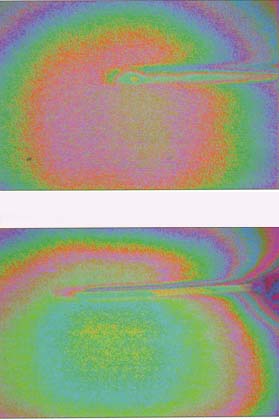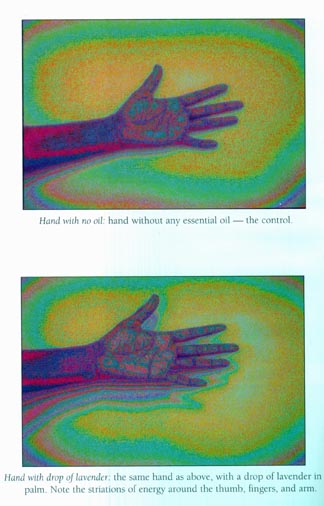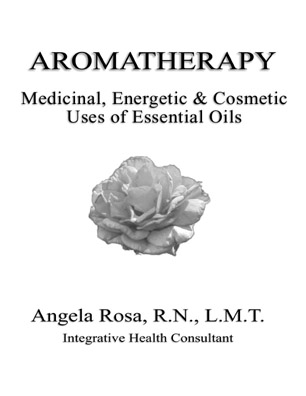MODES OF APPLICATION

Essential oils penetrate our body through our skin, nasal passages, lungs, and gastrointestinal tract. They now go into the lymph and blood circulation. As components of the oil circulate with the blood, the tissues and organs can use them in their own metabolic proceeses. For example, lemon oil is full of vitamins B1, B2, B3, A, C and PP (a factor in the protection of the vascular system). It increases lymph function and leukocyte formation. The components of the oils can be received by the blood, along with the beneficial properties specific to each oil, i.e. sedation, stimulation, cooling and tonification.
Essential oils can be detected in all the cells of the body 21 minutes after application. Essential oils are the healing life force of plants and are 50 times (50X) or more powerful than the raw plant itself. They bring oxygen, nutrients and other therapeutic elements along with them to the cells.
Essential oils are of a volatile nature, which means they leave the body quickly, usually within 48 hours (a little longer if the person is obese). As they are being excreted the oils can effect our body also. For example: Eucalyptus may be outgassed as a vapor from the lungs with effect on the mucous membranes as it exits. Rose oil is extracted by the liver and it will be held briefly by the gallbladder before it is dumped into the G.I. tract where it can have a profound affect on these organ systems. Juniper may be filtered out by the kidneys, doing its work there and others may exit throught the skin, influencing sebaceous glands and becoming part of our skins protective mantle (layer).
Back to the top
METHODS OF USE AND GENERAL GUIDELINES FOR VOLUME

• Anointing: 1-2 drops in 1/2 teaspoon of vegetable carrier oil.
• Baths: 1-6 drops. Run the tub, add oil and swish. For sensitive skin dilute in vegetable oil one drop for one drop of essential oil. Avoid oils that can cause skin irritation such as, basil, cinnamon, clove, grapefruit, eucalyptus, peppermint, lemon, thyme and lime. For a salt bath add 2 drops of essential oil into a teaspoon of salt, mix and add to bath.
• Body oils: 10-20 drops in 30 mls (one fluid ounce) of vegetable oil. When making a blend add essential oils to the bottle first then roll it in your hand to mix, then add carrier oil and mix again. Label bottles with ingredients, purpose for its use and the date.
• Compresses: 2 drops to a pint of cold or hot water, depending on your needs.
• Diffusers: 6-12 drops or more
You can create various blends or use a
single oils specfic to your need. Use oils to calm, detoxify, for colds or other medical challenges, to stimulate or uplift
and to purify the air.
• Showers: 1-2 drops can be put on a separate washcloth, wipe over body avoiding delicate tissue. DO this while the water is running over you. Breathe deeply.
• Tissue or Handkerchief: 1-2 drops. Inhale as needed.
• Room Sprays: 6-10 drops in 8 ounces of water which you can mix 1/4 teaspoon of salt into. Use a plant mister or other
spray bottle. Spray away from clothing, eyes or furniture so as not to damage.
• Fires: 1 drop of oil per log. Let sit for one hour before placing on fire as essential oils are flammable.
• On Light Bulbs: Use 1 or 2 drops only. Oils are flammable so be sure you put them on a cool light bulb, not one that has already heated up. Light rings are also
available.
• Perfume: Dilute essential oils 50/50 with jojoba oil
• Sweat Lodges: 5-10 drops on water that is placed on to the rocks.
• Laundry Applications: A few drops added to laundry soaps and powders will fragrance and sanitize your clothing while you do the washing. With powders, use a fork to blend and incorporate the oils. You can make bigger batches to avoid having to do this with each load. Also a few drops of oil on a handkerchief that is placed in the dryer will add a lovely fragrance, of your choice, to your clothes. Lavender and
patchouli work well.
• Garbage cans or trash compactors: Put a few drops of lemon or other tree oils, such as pine, eucalyptus or cedar into the empty can each time you empty it.
• Kitchen and bathroom fragrancing: A drop or two of can be added to the toilet paper or paper towel cardboard tube each
time you replace them.
• Vacuum cleaner freshener: Add 3-4 drops to your filter or place a fragranced cotton ball in the vacuum cleaner bag.
• To drive away mosquitos: Add a few drops of citronella oil to your floral arrangements or the melted wax of your candles.
• Closet freshners and insect repellants: Oils
of clove, lavender and cedarwood keep moths away. Place a few drops on a strip of cloth or a cotton ball in the closet. Refreshen as needed.
Learn to make your own household products and personal care items using essential oils. Many recipes are included in the books I have listed on my resource pages and bibliography. Not only will you get the health benefits of the oils themselves but you will be sure the products you are using are free of synthetics and harmful chemicals. Making products is fun and you can get very creative. You will save money too. These inspirations can be given as gifts to friends and family. I have found people are thrilled to get something I have personally made for them. This is a lovely way to give to yourself as well. Take the time to let your body know you care about it. Once you get the knack, you will find making these items does not take much time and you may find it will give you a great deal of satisfaction.
You can read more about making you own body care products on my web page, by clicking here.
Check links page to connect with companies using therapeutic grade essential oils for personal care and household products.
Back to the top
CARRIER OR BASE OILS

Most times essential oils are NOT used in their pure form because they are too concentrated. They are generally diluted in a carrier oil, which is a fatty oil. Some of the most common carrier oils are almond, apricot kernel, coconut, grapeseed, sesame, hazel nut, avocado, walnut, sunflower, safflower, kukui and macadamia nut oils. Olive oil has excellent qualities also, yet is not used often because it is very heavy in both texture and smell. Jojoba oil is also often used because it less likely to go rancid, though it is actually a wax. Though you can use any oil, or blends of any of the oils listed, you may want to choose your carrier oil based on its particular signature and energietics.
ATTRIBUTES OF MORE FREQUENTLY USED CARRIER OILS
ALMOND OIL. Use ONLY sweet almond oil, not bitter almond which can be poisonous and irritating to the skin. Sweet almond is heating and has a mild smell and is a favorite of many aroma and massage therapists.
APRICOT KERNEL OIL. Another favorite among massage therapists, as it is not a strong smelling oil. Apricot kernel is warming, sweet and makes the skin feel smooth.
COCONUT OIL. This oil is cooling, reflects radiation from the sun and is very moisturizing. Note that coconut oil does not have an aroma unless a synthetic fragrance has been added.
GRAPESEED OIL. This is a very pentetrating oil. Be sure of how this oil has been extracted as many times it is solvent expressed.
SESAME OIL. Nourishing, high in minerals and able to block 45% of ultraviolet rays, this oil is very protective and good for use in sun screen products.
AVOCADO OIL. This oil is high in Vitamins E, A and D. It is a good oil to use for preventing deterioration of our skin elasticity and is good for many skin condtions, such as eczema. Highly moisturizing, warming and sweet, unrefined avocado oil also has sun screen properties .
OLIVE OIL. Is a neutral oil, with antiseptic and stimulating properties. Good for joint pain and often used to soften and decongest the biliary system.
SAFFLOWER OIL. A warm and pungent oil.
SUNFLOWER OIL. A sweet and cooling oil. Nourishing to the skin and good for rashes.
Many times I use an oil which has already been infused with herbs, such as calendula, chamomile or helichrysum. In this way I am starting with a medicated oil base that I can now add my essential oils to. Many other plant materials can be used to make a medicated oil.
To learn how to make a medicated oil go to the HERBAL INFORMATION page
I will also mention here that wheat germ oil, though too expensive to be used as a carrier oil, can be added to other oil blends as an anit-oxidant. This will extend the life of the oil blend and keep it from going ranicd as quickly. Add 1 part wheat germ oil to 10 parts of the other oil or oils. A few drops of Vitamin E oil, added to your oil blend, can serve this purpose too.
When making a blend, add the essential oils first, one by one, blending by rolling the bottle in your hands. This movement allows the oils to synergistically blend with each other. NOW you can add the base oil to the essential oils. Mix by turning the bottle upside down first, this integrates the oils, then roll again between your hands. This rolling process is the same one you may have used when making ropes from clay for creating bowls or other pottery items. This method of mixing seems to energize the blend.
It is always important to know the quality of the carrier oils you are using. Be sure they are organic, cold-pressed and virgin. This way you will know they have not been grown using pesticides, herbicides and fungicides, have not been heated and have been taken from the first pressing of the oil material. Sometimes as little as one drop of essential oil can be used to get the desired effect you are after. You can experiment or follow some of the guidlines listed above.
Back to the top
|






